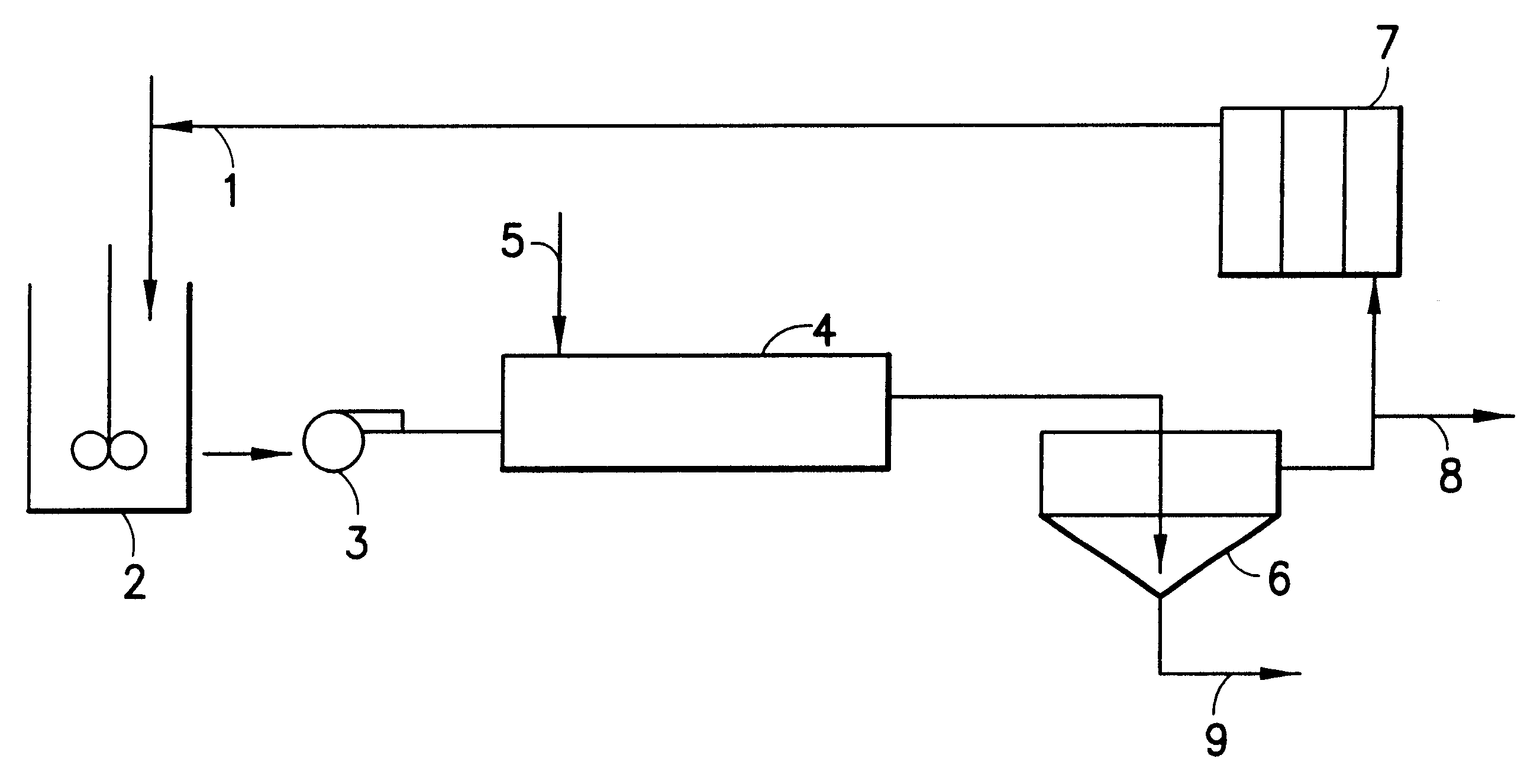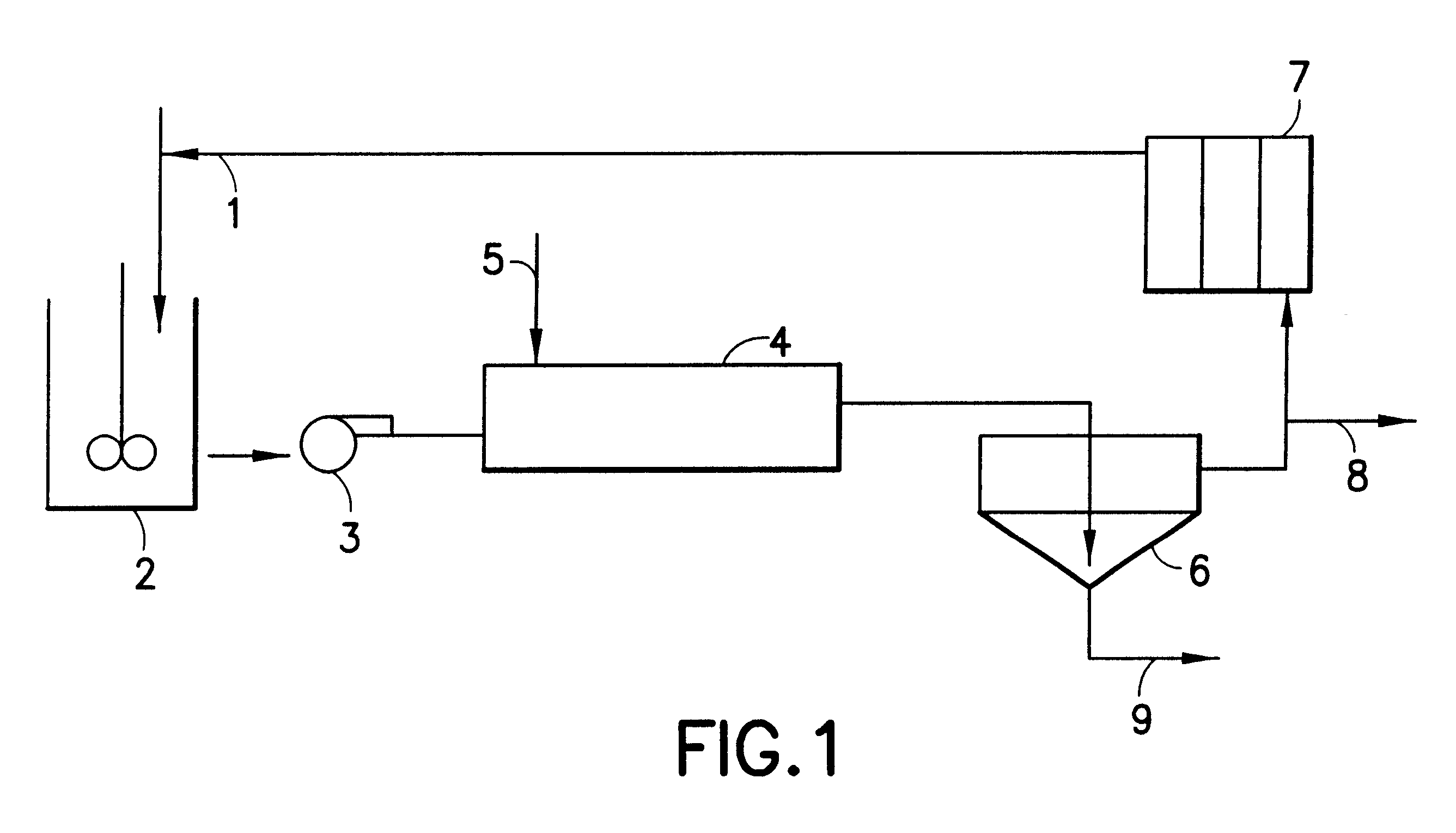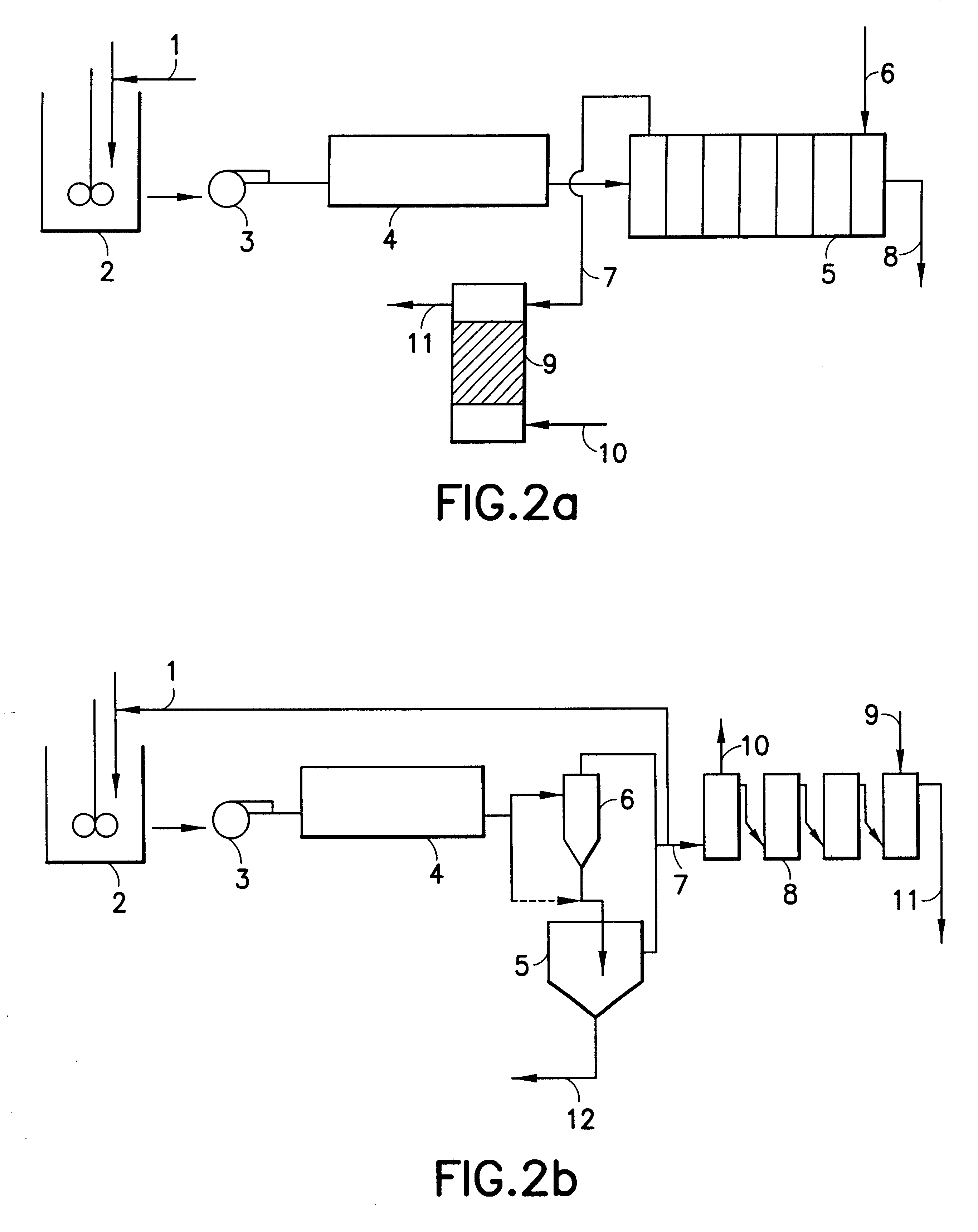Hydrometallurgical process for the recovery of nickel and cobalt by ammoniacal leaching
a technology of ammonia and ammonia, which is applied in the direction of process efficiency improvement, solvent extraction, chemistry apparatus and processes, etc., can solve the problems of high energy, ammonia and air consumption and maintenance costs in both cases, metal losses, etc., and achieves metal losses, iron hydroxide formation, and reduction of ni and co losses.
- Summary
- Abstract
- Description
- Claims
- Application Information
AI Technical Summary
Benefits of technology
Problems solved by technology
Method used
Image
Examples
example 2
An ore sample bearing 1.48% Ni, 0.12% Co, and 45% Fe was reduced at a temperature of 730.degree. C. for 30 min., using a reducing gas containing 26% CO, 16% H.sub.2 and 3% CO.sub.2. Ore reduced was leached in a tubular reactor for 4 minutes. Air consumption was 100 m.sup.3 N / t mineral.
Ammonia concentration in the liquor was 90 g / L, and CO.sub.2, 45 g / L.
The pulp was submitted to filtration. The results were as follows:
Relative extraction, from standard leaching, %
example 3
A sample of reduced ore was taken at the industrial furnace outlet, whose composition was 1.40% Ni, 0.13% Co, 50.3% Fe, and 1.5% metallic Fe.
The ore was leached in a tubular reactor using a liquor having 65 g / L NH.sub.3 and 35 g / L CO.sub.2, and 8 g / L Ni. Pulp was filtered and the solid washed with ammonia solution.
Results attained were:
Relative Extraction, %
example 4
A sample of reduced ore (under the conditions relative to example 1), whose composition was: 1.39% Ni, 0.112% Co, 55.4% Fe and 3.0% metallic Fe.
Ore was mixed with a solution containing 50 g / L NH.sub.3 and 30 g / L CO.sub.2, being leached in a tubular reactor at a flow rate of 300 cc pulp / min. and 10 L / min. air
Leached pulp was fed upstream to 6 stages provided with ion-exchange resin type PSO.
Standard leaching was performed in tank using a solution containing 170 g / L NH.sub.3, 70 g / L CO.sub.2, for 2 hours with air injection, stirring mechanically. A recovery of 81% Ni and 60.3% cobalt was attained over this test.
The conditions established were:
Number of stages: 8
Contact time / stage: 20 min.
Volumetric ratio of pulp-resin flow:
PUM
| Property | Measurement | Unit |
|---|---|---|
| temperature | aaaaa | aaaaa |
| temperature | aaaaa | aaaaa |
| density | aaaaa | aaaaa |
Abstract
Description
Claims
Application Information
 Login to View More
Login to View More - R&D
- Intellectual Property
- Life Sciences
- Materials
- Tech Scout
- Unparalleled Data Quality
- Higher Quality Content
- 60% Fewer Hallucinations
Browse by: Latest US Patents, China's latest patents, Technical Efficacy Thesaurus, Application Domain, Technology Topic, Popular Technical Reports.
© 2025 PatSnap. All rights reserved.Legal|Privacy policy|Modern Slavery Act Transparency Statement|Sitemap|About US| Contact US: help@patsnap.com



